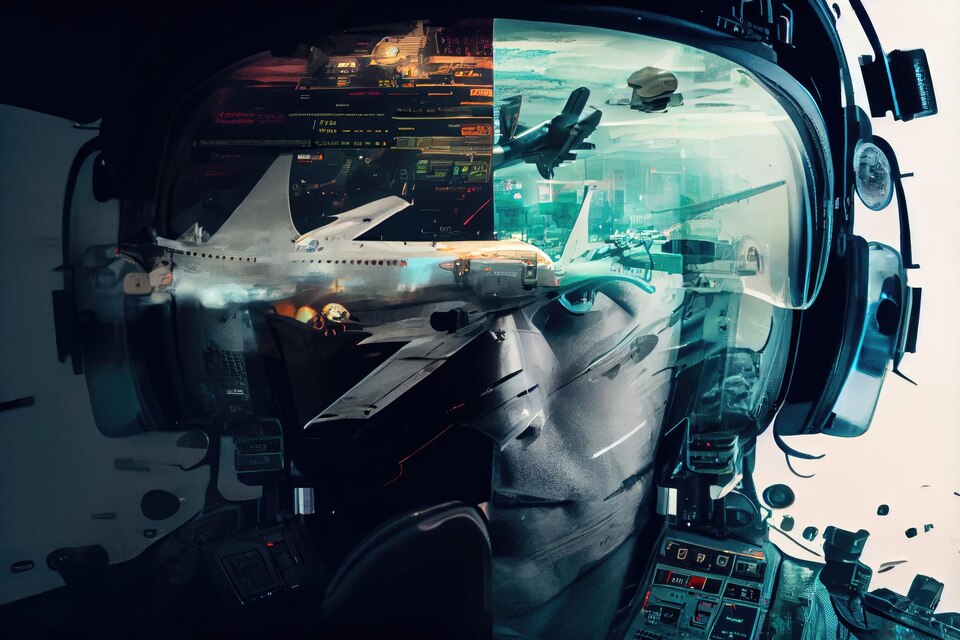Unmanned systems have revolutionized various industries, from military and surveillance. Unmanned Aircraft and the Rise of AI-Powered Pilot Assistants can take over and become the new normal in our platforms. These aircraft, operated without human pilots on board, have seen significant advancements in recent years. One of the most exciting developments is the integration of AI-powered pilot assistants in unmanned jets, such as the XQ-58A Valkyrie. This article delves into the fascinating world of unmanned aircraft and explores how AI agents are transforming the capabilities of these uncrewed jet aircraft.

What are Unmanned Aircraft?
Unmanned aircraft, commonly referred to as drones, are aircraft that do not require a human pilot on board to operate. These aerial vehicles can be controlled remotely by a human operator or autonomously navigate using pre-programmed flight paths and sophisticated onboard systems. Over the years, the application of unmanned aircraft has expanded significantly, ranging from military reconnaissance and surveillance to civilian purposes like aerial photography, package delivery, and environmental monitoring.
Rise of AI-Powered Pilot Assistants
Early Beginnings
The concept of unmanned aircraft dates back to the mid-19th century when Austrians used unmanned balloons loaded with explosives for military purposes. However, it was in the 20th century that significant progress was made with the introduction of remote-controlled aircraft during World War I and World War II.
Military Applications
The military has been a driving force behind the development of unmanned aircraft. Drones offered a way to carry out missions without risking human lives, making them ideal for reconnaissance, intelligence gathering, and targeted strikes.
Commercial Use
In recent years, the commercial use of drones has skyrocketed. Companies are employing drones for delivery services, surveying large areas, monitoring crops, and capturing stunning aerial footage in the film industry.
The XQ-58A Valkyrie: An Overview
The XQ-58A Valkyrie is a cutting-edge unmanned jet aircraft developed by the United States Air Force Research Laboratory (AFRL). This autonomous aircraft is designed to provide a cost-effective and versatile solution for a variety of missions. The XQ-58A has a stealthy appearance, reduced signature, and is equipped with advanced avionics, sensors, and weapons systems.
AI-Powered Pilot Assistants: Enhancing Unmanned Flight
The integration of AI-powered pilot assistants has propelled the capabilities of unmanned aircraft to new heights. These AI agents offer numerous advantages, making unmanned flight safer, more efficient, and adaptable.
Benefits of AI in Unmanned Aircraft
AI-powered pilot assistants can process vast amounts of data in real-time, allowing drones to make informed decisions on their own during flight operations. This capability is particularly valuable in dynamic and unpredictable environments.
Advanced Navigation Systems
AI enables unmanned aircraft to navigate with precision, avoiding obstacles and adjusting flight paths based on changing conditions. The result is enhanced safety and increased operational range.
Decision-Making Capabilities
By analyzing data from various sensors and external sources, AI agents can make critical decisions during missions, such as diverting from hazardous weather or identifying and engaging targets autonomously.
The Role of AI in the XQ-58A Valkyrie
The XQ-58A Valkyrie takes advantage of AI-powered pilot assistants to unlock its full potential and provide a tactical edge in challenging scenarios.
Autonomous Takeoff and Landing
AI allows the XQ-58A to perform autonomous takeoffs and landings, reducing the need for extensive ground support and making it more deployable in remote or austere environments.
In-Flight Adaptability
During missions, the AI agent onboard the XQ-58A can adapt to changing situations, enabling the aircraft to modify its flight path, altitudes, or speed as required.
Collaborative Swarming Techniques
AI enables the XQ-58A to collaborate with other unmanned aircraft, forming a swarm that can accomplish complex missions collectively, such as reconnaissance over a large area or engaging multiple targets.
AI and Flight Safety
Safety is paramount in aviation, and AI plays a crucial role in ensuring the well-being of unmanned aircraft and the people and property they interact with.
Collision Avoidance Systems
AI-powered collision avoidance systems allow drones to detect and avoid potential collisions with other aircraft, buildings, or obstacles in their flight path.
Weather Prediction and Analysis
AI can analyze weather data in real-time and make decisions to divert flights from hazardous weather conditions, reducing the risk of accidents.
Redundancy and Fail-Safes
AI agents can monitor the health of critical systems onboard unmanned aircraft and activate fail-safe measures in the event of component failures, mitigating potential disasters.
Future Prospects of AI in Unmanned Aircraft
The future of AI in unmanned aircraft is promising, with numerous opportunities to enhance and expand their capabilities further.
AI for Dynamic Mission Planning
AI-powered drones could autonomously plan and execute complex missions, adapting to changing objectives and environmental conditions without constant human intervention.
Expanding Autonomous Capabilities
As AI technology advances, unmanned aircraft will become more autonomous, reducing the need for direct human control and making them more versatile.
Integrating AI with Ground Operations
AI can play a vital role in seamless coordination between unmanned aircraft and ground operations, enabling smoother communication and enhancing overall mission effectiveness.
Challenges and Ethical Considerations
While AI brings significant benefits, it also poses challenges and ethical concerns that need to be addressed.
Privacy Concerns
Unmanned aircraft equipped with advanced sensors can raise privacy issues, leading to debates on data collection and usage.
Autonomous Weapons Debate
The use of AI in military drones has sparked debates on the ethical use of autonomous weapons and the potential implications of such technology.
Human Oversight and Control
Maintaining human oversight and control over AI-powered unmanned aircraft is crucial to ensuring responsible and ethical use.
The Impact of AI-Powered Unmanned Aircraft on Aviation
The integration of AI-powered pilot assistants has the potential to revolutionize aviation, making it safer, more efficient, and adaptable to evolving challenges.
Embracing AI for a Safer and Smarter Future
As AI technology continues to evolve, embracing its potential in unmanned aircraft can lead to a future where aviation is safer, more efficient, and capable of achieving feats previously unimaginable.
Conclusion
Unmanned aircraft have come a long way since their early beginnings, and the integration of AI-powered pilot assistants has ushered in a new era of unmanned flight. The XQ-58A Valkyrie stands as a testament to the advancements in autonomous aviation, showcasing how AI can enhance the capabilities of unmanned jet aircraft. Embracing AI responsibly and collaboratively will pave the way for a future where unmanned aircraft contribute significantly to various industries while maintaining safety and efficiency.
FAQs
- What is the XQ-58A Valkyrie?
The XQ-58A Valkyrie is an autonomous unmanned jet aircraft developed by the United States Air Force Research Laboratory (AFRL). - How does AI enhance unmanned flight?
AI-powered pilot assistants process data in real-time, making informed decisions during flight operations and enabling drones to navigate, adapt, and collaborate more efficiently. - What are some challenges of using AI in unmanned aircraft?
Privacy concerns, debates on autonomous weapons, and ensuring human oversight and control are some of the challenges associated with AI in unmanned aircraft. - What role does AI play in flight safety?
AI helps ensure flight safety by enabling collision avoidance systems, weather prediction and analysis, and implementing redundancy and fail-safe measures. - How can AI and human operators work together in unmanned aircraft?
The most effective approach involves using AI as a tool to assist and augment human capabilities rather than replacing human operators entirely.







